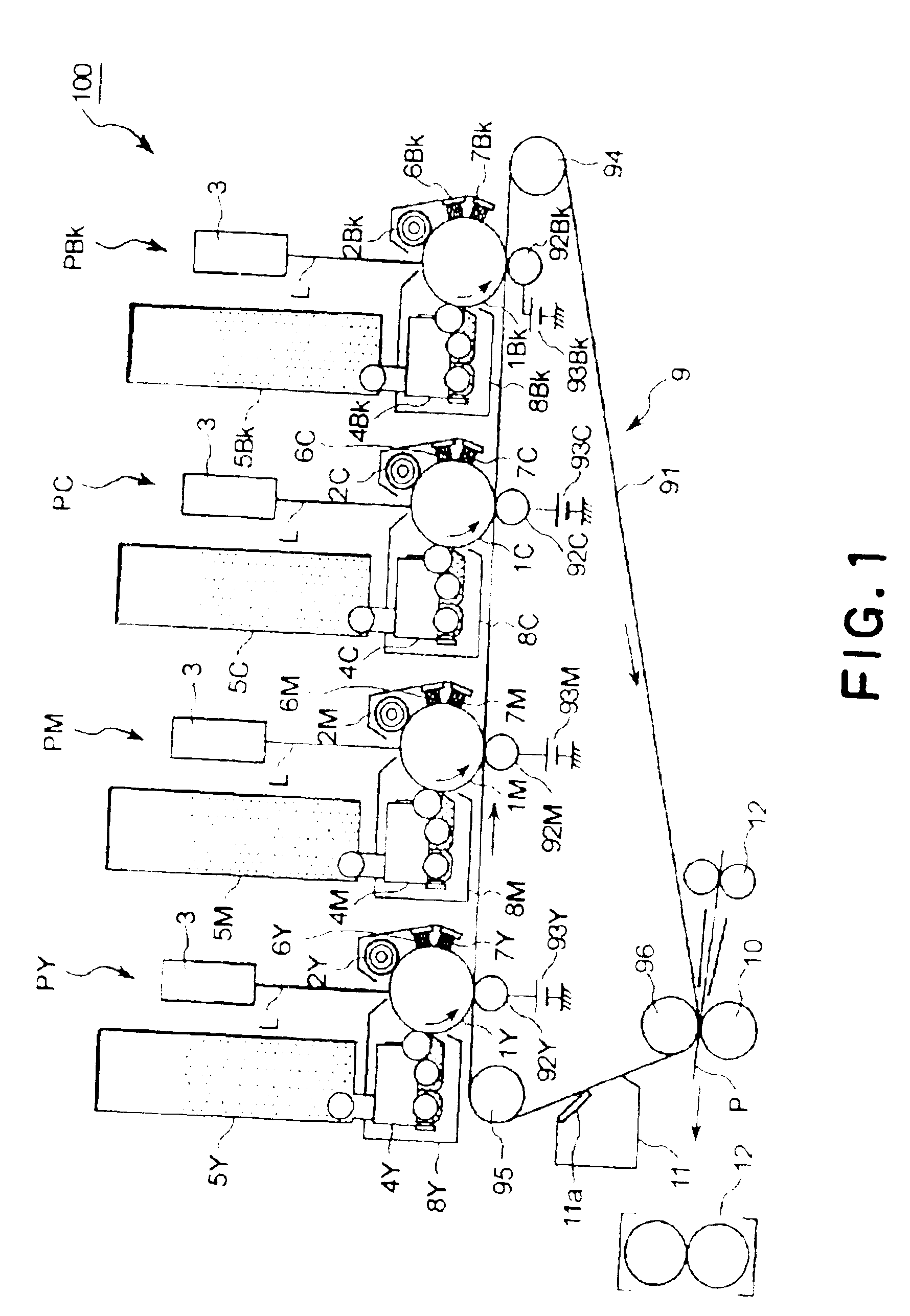Image forming apparatus including first and second auxiliary residual developer charging features
a technology of image forming apparatus and residual developer, which is applied in the direction of electrographic process apparatus, instrumentation, corona discharge, etc., to achieve the effect of preventing adhesion and improving the recovery performance of transfer residual toner
- Summary
- Abstract
- Description
- Claims
- Application Information
AI Technical Summary
Benefits of technology
Problems solved by technology
Method used
Image
Examples
embodiment 1
(Embodiment 1)
[0034]FIG. 1 shows a schematic sectional view of an embodiment of the image forming apparatus according to the present invention.
[0035]Referring to FIG. 1, an image forming apparatus 100 of this embodiment is a color laser (beam) printer (maximum paper feeding size: A3) using a transfer-type electrophotographic process, a contact charging scheme and a reverse development scheme. Based an image information from an external host connected to a main body of the image forming apparatus so as to be capable of being communicated therewith, a full-color image is formed and outputted onto an image receiving member, such as a sheet, an OHP sheet or cloth.
[0036]The image forming apparatus 100 includes a plurality of process cartridges 8, as image forming station, each comprising an image bearing member, a charging means, a developing means, a first auxiliary charging means, and a second auxiliary charging means. The image forming apparatus 100 is a serially arranged four-drum ty...
PUM
 Login to View More
Login to View More Abstract
Description
Claims
Application Information
 Login to View More
Login to View More - R&D
- Intellectual Property
- Life Sciences
- Materials
- Tech Scout
- Unparalleled Data Quality
- Higher Quality Content
- 60% Fewer Hallucinations
Browse by: Latest US Patents, China's latest patents, Technical Efficacy Thesaurus, Application Domain, Technology Topic, Popular Technical Reports.
© 2025 PatSnap. All rights reserved.Legal|Privacy policy|Modern Slavery Act Transparency Statement|Sitemap|About US| Contact US: help@patsnap.com



